John Pennekamp Coral Reef State Park
- January 17, 2024
- 0 comment
Located along the captivating shores of Key Largo in the Florida Keys, John Pennekamp Coral Reef State Park unfolds as a marine oasis, inviting visitors to embark on an unparalleled journey into the heart of underwater wonders. Established in 1963 as the nation’s first undersea park, this aquatic haven sprawls over approximately 70 nautical square miles, encompassing coral reefs, seagrass beds, and mangrove swamps. Named in honor of the esteemed environmentalist John D. Pennekamp, whose advocacy played a pivotal role in its creation, the park serves as a testament to the preservation of the only living coral reef in the continental United States.
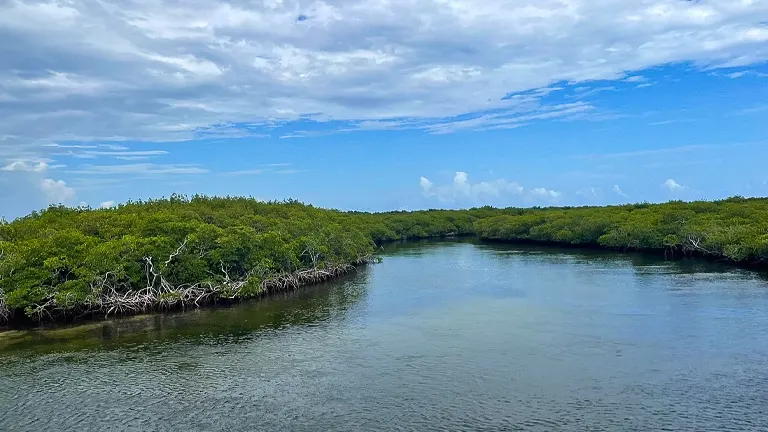
Boasting a vibrant mosaic of marine life and coral formations, the park beckons adventurers and nature enthusiasts alike to explore its depths through activities like snorkeling, scuba diving, and glass-bottom boat tours. Beyond the underwater realm, John Pennekamp Coral Reef State Park offers a diverse range of activities, from camping and fishing to guided tours through mangrove swamps, creating an immersive and unforgettable experience for all who venture into its azure embrace.
Characterizing Features of the John Pennekamp Coral Reef State Park
- Coral Reefs and Marine Life: John Pennekamp Coral Reef State Park is renowned for its vibrant and diverse coral reefs, considered among the most beautiful and varied in the continental United States. These reefs provide a critical habitat for a plethora of marine species, from colorful tropical fish to majestic sea turtles and elusive rays. Snorkeling and scuba diving opportunities abound, offering visitors an immersive encounter with the kaleidoscopic underwater world.
- Mangrove Swamps: The park is not limited to its marine wonders; it also boasts extensive mangrove swamps that add a unique dimension to the ecological tapestry. Guided tours through these mangrove ecosystems reveal the intricate interplay between land and sea. Visitors can witness the vital role these swamps play in providing shelter and nursery grounds for various marine organisms, showcasing the park’s commitment to preserving diverse habitats.
- Historical Significance: Enriched with historical importance, John Pennekamp Coral Reef State Park was the first undersea park established in the United States in 1963. Named after John D. Pennekamp, a key figure in environmental advocacy, the park is a testament to the ongoing efforts to preserve natural treasures. Its listing on the National Register of Historic Places in 1972 underscores its significance in the nation’s conservation legacy.
- Recreational Activities: Beyond its ecological splendors, the park offers a myriad of recreational activities, making it an ideal destination for all types of visitors. From camping at one of the 47 full-facility sites to fishing in designated areas, swimming at picturesque beaches, and picnicking amid the natural beauty, the park ensures a well-rounded and enjoyable experience for families, adventure seekers, and nature enthusiasts alike.
- Educational Facilities: The Visitor Center at John Pennekamp Coral Reef State Park is a hub of education, featuring a 30,000-gallon saltwater aquarium. This facility provides visitors with valuable insights into the marine ecosystems, showcasing the importance of conservation efforts. Nature films and videos further contribute to the educational experience, fostering a deeper understanding of the delicate balance within this unique environment.
- Christ of the Abyss: One of the most iconic sites within the park is the Christ of the Abyss statue near North Dry Rocks. This underwater sculpture, standing in nearly 25 feet of water, serves as a poignant symbol of the park’s dedication to marine conservation. A popular destination for scuba divers and snorkelers, the statue adds a spiritual and artistic element to the already captivating underwater landscape.
History of John Pennekamp Coral Reef State Park
The history of John Pennekamp Coral Reef State Park is a tale of visionary conservation efforts and a commitment to preserving the natural wonders of the Florida Keys. In the 1930s, plans to designate the reefs off Key Largo for a park emerged, initially proposed as part of the Everglades National Park. However, opposition from property owners and local authorities hindered this plan. It wasn’t until the late 1950s that concerns about the alarming damage to the reefs spurred action. Dr. Gilbert L. Voss and John D. Pennekamp, an editor with the Miami Herald and a fervent conservationist, led a formidable campaign to protect the reefs from destructive practices like coral harvesting.

In 1960, the Florida Board of Parks and Historic Memorials designated the state-controlled reefs off Key Largo as a permanent preserve. President Dwight D. Eisenhower later proclaimed the adjacent federally controlled area as the Key Largo Coral Reef Preserve. In recognition of John Pennekamp’s instrumental role in marine conservation, the park was officially named John Pennekamp Coral Reef State Park when it opened in 1963. John D. Pennekamp had previously been actively involved in establishing Everglades National Park and served as the first chairman of the Florida Board of Parks and Historic Memorials.
Over the years, the park’s boundaries expanded to encompass approximately 70 nautical square miles, including coral reefs, seagrass beds, and mangrove swamps. In 1972, the park earned a prestigious place on the National Register of Historic Places, recognizing its significance in the nation’s environmental and conservation history. Today, John Pennekamp Coral Reef State Park stands not only as a recreational haven but also as a living testament to the enduring legacy of those who passionately fought to protect and preserve the unique marine ecosystems found within its waters.
Importance in Conservation and Recreation of John Pennekamp Coral Reef State Park
John Pennekamp Coral Reef State Park holds a dual significance as a bastion of marine conservation and a haven for recreational pursuits. As the first undersea park established in the United States in 1963, the park serves as a crucial sanctuary for the preservation of the only living coral reef in the continental United States. Its vast expanse, covering approximately 70 nautical square miles, encompasses coral reefs, seagrass beds, and mangrove swamps, contributing to the protection of diverse marine species and fragile ecosystems. The park’s designation on the National Register of Historic Places in 1972 underscores its pivotal role in the nation’s conservation history.
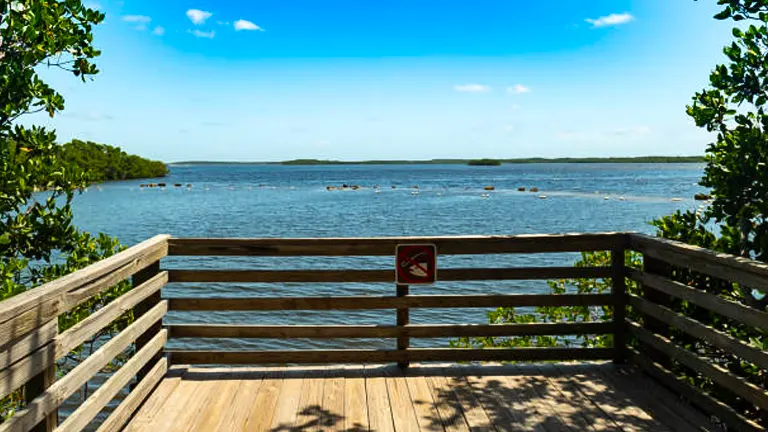
Beyond its conservation efforts, John Pennekamp Coral Reef State Park offers a myriad of recreational opportunities, making it a cherished destination for visitors. With activities ranging from snorkeling and scuba diving amid vibrant coral formations to camping, fishing, and guided tours through mangrove swamps, the park provides an immersive experience for nature enthusiasts. Its Visitor Center, featuring a 30,000-gallon saltwater aquarium and educational exhibits, further enhances the understanding of marine ecosystems, fostering an appreciation for the delicate balance between conservation and recreation. John Pennekamp Coral Reef State Park stands as a testament to the harmonious coexistence of environmental preservation and the enjoyment of the breathtaking natural wonders it seeks to protect.
Unique Location of John Pennekamp Coral Reef State Park
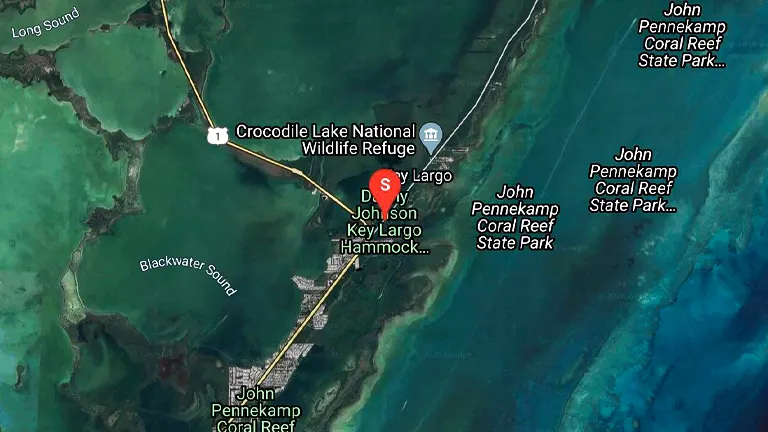
In the upper part of Key Largo in the Florida Keys, you’ll find John Pennekamp Coral Reef State Park, it stands as a captivating marine sanctuary. Spanning approximately 70 nautical square miles, it encompasses a rich tapestry of coral reefs, seagrass beds, and mangrove swamps. What makes this destination truly special is its distinction as the first undersea park in the United States, established in 1963. Embracing the convergence of the Atlantic Ocean, the park not only showcases the vibrant underwater world with its diverse marine life but also presents a harmonious blend of terrestrial wonders, including mangrove swamps and coastal hammocks. This unique location positions John Pennekamp Coral Reef State Park as a gateway to the mesmerizing beauty of the Florida Keys, inviting visitors to explore and appreciate the delicate balance between land and sea in this exceptional marine environment.
Diverse Vegetation and Plant Species in John Pennekamp Coral Reef State Park
- Red Mangroves (Rhizophora mangle): John Pennekamp Coral Reef State Park is home to thriving red mangrove forests lining its coastal edges. These mangroves, characterized by their stilt-like roots, not only serve as critical habitat for juvenile fish and invertebrates but also act as natural filters, trapping sediment and promoting water clarity.
- Gumbo Limbo Trees (Bursera simaruba): Scattered throughout the park’s tropical hammocks are Gumbo Limbo trees, also known as the “tourist tree” for its peeling bark. These resilient trees, with their coppery bark and sprawling canopy, provide shade for the diverse understory vegetation and contribute to the park’s lush, terrestrial biodiversity.
- Glasswort (Salicornia): In the coastal areas surrounding mangroves, glasswort, or pickleweed, thrives. This salt-tolerant succulent not only adds to the park’s unique flora but also provides food for wildlife, including migratory birds such as the seaside sparrow, reinforcing the ecological importance of these coastal zones.
- Turtle Grass (Thalassia testudinum): Submerged in the park’s clear waters, expansive beds of turtle grass sway with the currents. This seagrass species plays a crucial role in the marine ecosystem by providing shelter for juvenile fish and serving as a feeding ground for manatees. The health of turtle grass beds is indicative of the park’s overall marine vitality.
- Black Mangroves (Avicennia germinans): Alongside red mangroves, black mangroves thrive in the park’s coastal environment. Recognizable by their distinctive pneumatophores (vertical roots), black mangroves contribute to the overall biodiversity by providing nesting sites for coastal birds and offering habitat for small fish seeking refuge.
- Elkhorn Coral (Acropora palmata): Beneath the ocean’s surface, the coral reefs within the park are adorned with distinctive elkhorn coral. These branching corals not only add structural complexity to the underwater landscape but also provide shelter for a myriad of marine species. Their sensitivity to environmental changes makes them an important indicator of coral reef health.

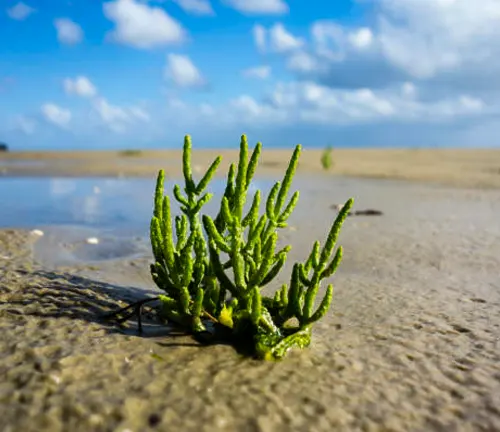
Understanding the specific plant species within John Pennekamp Coral Reef State Park, from the iconic red mangroves to the intricate seagrass beds and vibrant coral formations, enriches the visitor’s appreciation for the park’s intricate and interconnected ecosystems.
Fauna
- Queen Conch (Strombus gigas): The seagrass beds of John Pennekamp Coral Reef State Park are home to the Queen Conch, a large marine snail. Recognizable by its ornate shell, the Queen Conch plays a crucial role in maintaining seagrass health by feeding on algae, contributing to the overall balance of the marine ecosystem.
- American Crocodile (Crocodylus acutus): In the mangrove areas and coastal zones, the American crocodile is an intriguing resident. A rare and protected species, these crocodiles find refuge in the park, showcasing the diversity of wildlife that depends on the unique coastal ecosystems of John Pennekamp Coral Reef State Park.
- Parrotfish (Family Scaridae): Vibrant parrotfish are a common sight around the coral reefs. These colorful fish play a crucial role in maintaining the health of the reef by grazing on algae, contributing to coral growth. Witnessing the kaleidoscopic hues of parrotfish adds to the immersive experience of exploring the underwater world.
- Manatees (Trichechus manatus): The seagrass beds within the park serve as a vital feeding ground for the gentle manatee. These marine mammals, often seen grazing in shallow waters, highlight the park’s significance as a sanctuary for species dependent on seagrass habitats. Observing manatees underscores the importance of preserving these critical ecosystems.
- Loggerhead Sea Turtle (Caretta caretta): The sandy beaches near the park are nesting grounds for loggerhead sea turtles. These majestic creatures return annually to lay their eggs, emphasizing the park’s role in supporting the life cycle of endangered species. Conservation efforts within the park contribute to the protection of these nesting habitats.
- French Grunt (Haemulon flavolineatum): Schools of French grunt, recognizable by their distinctive yellow stripes, are a common sight around the coral formations. Their presence contributes to the overall biodiversity of the reef and adds to the visual spectacle for snorkelers and divers exploring the underwater landscapes of the park.
- French Angelfish (Pomacanthus paru): Gliding through the vibrant coral formations, the French Angelfish is a striking resident of John Pennekamp Coral Reef State Park. Recognizable by its bold yellow and dark blue coloration, this species adds to the allure of the park’s underwater landscape. Its presence underscores the biodiversity of the coral reefs and the park’s commitment to preserving these vital marine habitats.
- Spotted Eagle Ray (Aetobatus narinari): Graceful and majestic, the spotted eagle ray is a frequent visitor to the park’s coastal waters. Its distinctive spotted pattern and wing-like pectoral fins make it a highlight for snorkelers and divers. The presence of these rays exemplifies the diverse marine life that thrives within the protected boundaries of the park.
- Bar Jack (Caranx ruber): Schools of Bar Jack, with their silver bodies and vibrant yellow fins, navigate the coral reefs, contributing to the dynamic underwater scene. These sleek fish are indicative of the healthy reef ecosystem, as they rely on the abundant marine life within the park for their sustenance. Observing the Bar Jack in their natural habitat is a common and captivating experience for park visitors.
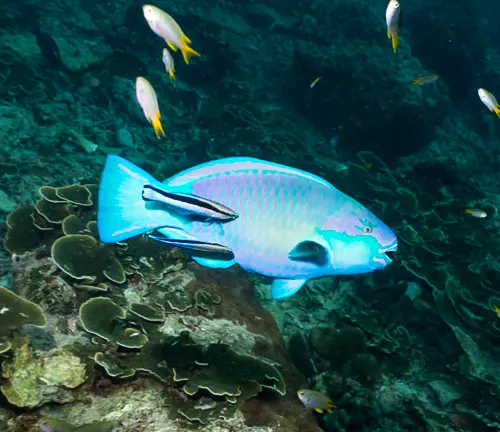

Exploring the diverse fauna within John Pennekamp Coral Reef State Park provides a glimpse into the intricate web of life that relies on the park’s unique marine ecosystems. From charismatic manatees to elusive French angelfish, each species contributes to the richness and ecological significance of this underwater haven.
Attractions in John Pennekamp Coral Reef State Park
1. Molasses Reef
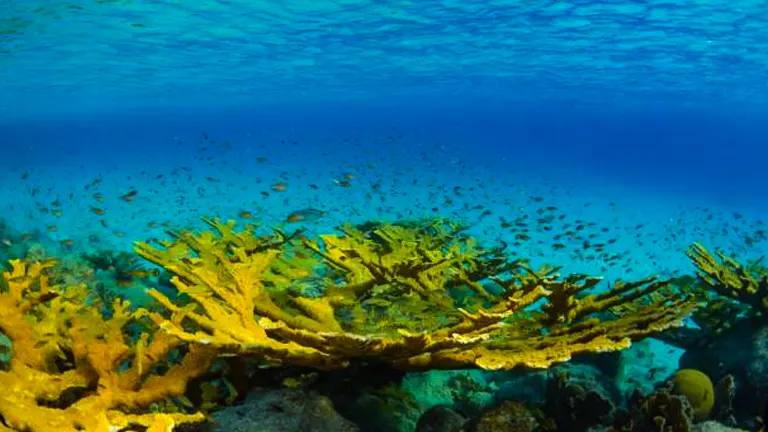
Molasses Reef stands as a jewel within John Pennekamp Coral Reef State Park, renowned for its diverse and vibrant underwater scenery. Teeming with colorful coral formations and a myriad of tropical marine life, this attraction is a paradise for snorkelers and divers alike. The underwater tapestry at Molasses Reef offers a captivating glimpse into the rich biodiversity that thrives within the park’s protected waters.
2. Glass-Bottom Boat Tours
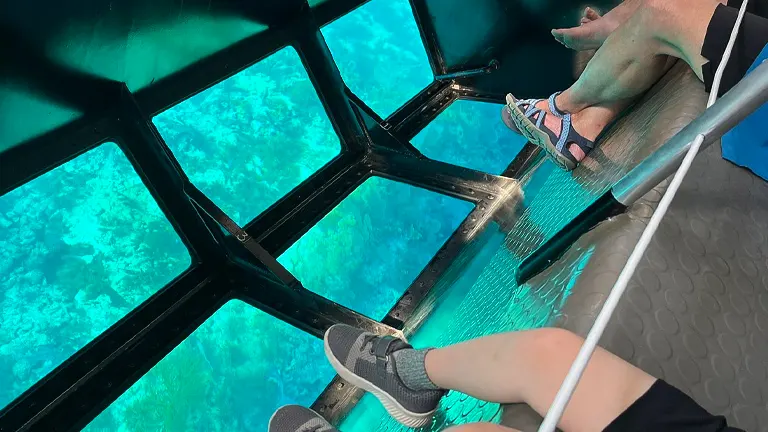
The Glass-Bottom Boat Tours provide a unique opportunity for visitors to marvel at the beauty of John Pennekamp’s underwater world without getting wet. These tours, featuring specially designed vessels with glass bottoms, offer panoramic views of the intricate coral formations and marine life beneath the crystal-clear waters. It’s an ideal choice for those who prefer a dry and comfortable introduction to the park’s aquatic wonders.
3. Christ of the Abyss Statue
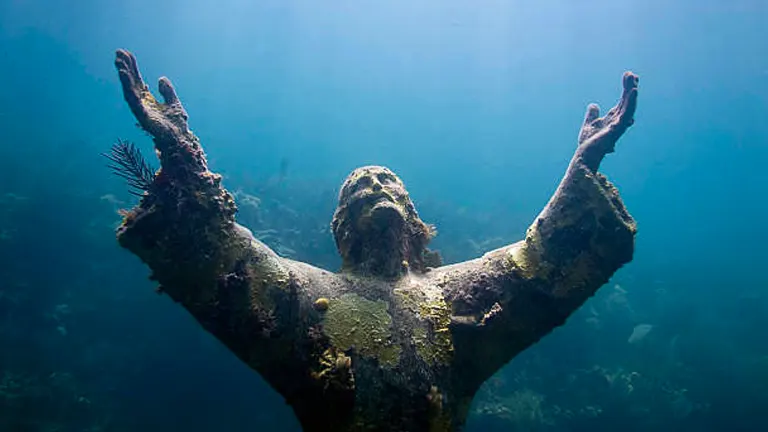
Submerged near North Dry Rocks, the Christ of the Abyss Statue adds a touch of artistry and spirituality to John Pennekamp Coral Reef State Park. This underwater sculpture, standing at 8.5 feet tall, serves as a unique attraction for scuba divers and snorkelers. The statue’s placement in the park’s marine environment adds a cultural and symbolic element to the underwater exploration.
4. Wild Tamarind Trail
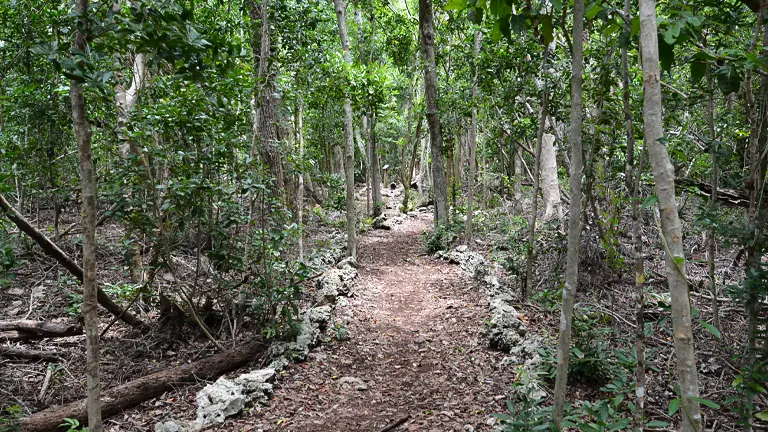
For those seeking a terrestrial adventure, the Wild Tamarind Trail winds through the park’s tropical hammocks, providing a scenic hiking experience. This nature trail is an attraction in itself, offering hikers a chance to escape into the lush greenery, observe diverse plant life, and perhaps spot local bird species in their natural habitat.
5. Visitor Center and Saltwater Aquarium

The Visitor Center serves as an educational hub within the park, featuring a 30,000-gallon saltwater aquarium. This facility offers visitors a deeper understanding of the park’s marine ecosystems, showcasing various species of fish and corals. Nature videos are also presented in the center’s theater, providing informative insights into the delicate balance of the underwater world.
These attractions collectively contribute to the allure of John Pennekamp Coral Reef State Park, offering visitors a diverse range of experiences that showcase the park’s commitment to marine conservation and appreciation for the beauty of its natural wonders.
Recreational Activities in the John Pennekamp Coral Reef State Park
1. Snorkeling and Scuba Diving
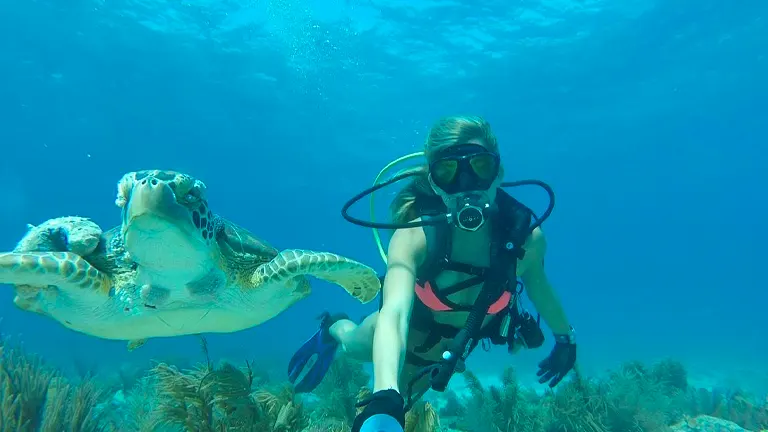
Among the most popular activities in John Pennekamp Coral Reef State Park, snorkeling and scuba diving allow visitors to explore the stunning coral reefs and marine life beneath the ocean’s surface. With designated areas ensuring the protection of the delicate ecosystems, snorkelers and divers can witness the vibrant underwater world, encountering schools of tropical fish, colorful corals, and even the occasional sea turtle. Whether you’re a seasoned diver or a novice snorkeler, the park offers an immersive experience for all skill levels.
2. Canoeing and Kayaking
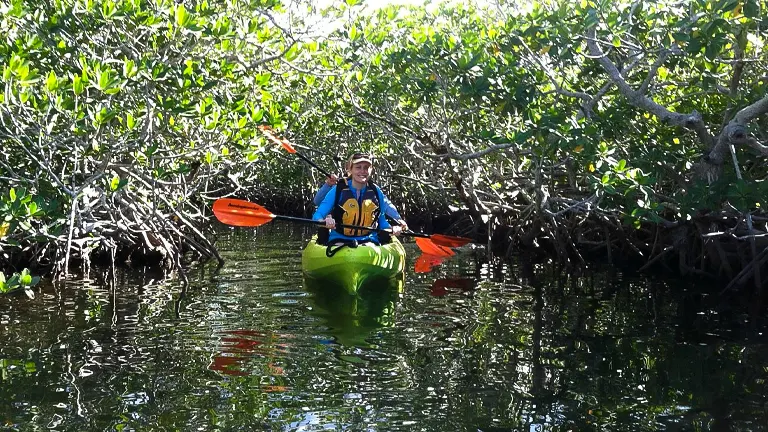
Exploring the park’s mangrove-lined channels and coastal areas is made accessible through canoeing and kayaking. Paddling through the serene waters allows visitors to appreciate the beauty of the mangrove swamps, observe bird life, and enjoy the tranquility of the park from a unique perspective. Whether you’re a solo paddler or part of a group, canoeing and kayaking offer a peaceful and scenic way to connect with the park’s coastal environment.
3. Wild Tamarind Trail Hiking
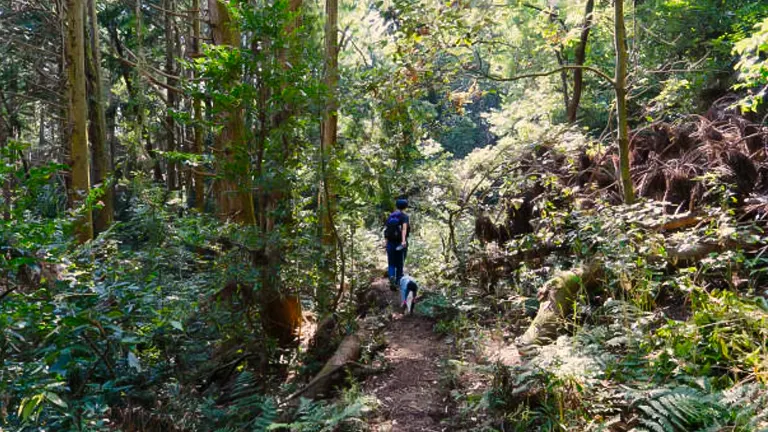
The Wild Tamarind Trail provides an opportunity for land-based exploration within the park. This hiking trail winds through the tropical hammocks, offering hikers a chance to immerse themselves in the lush vegetation and observe the diverse plant and animal life. The trail provides both a peaceful escape into nature and an educational experience, with interpretive signs highlighting the ecological significance of the park’s terrestrial environments.
4. Fishing

Designated fishing areas within the park allow anglers to cast their lines and try their luck in the Atlantic waters. Fishing in John Pennekamp Coral Reef State Park is subject to Florida state regulations, and visitors can expect to catch a variety of species, including snapper, grouper, and other coastal fish. Fishing adds an additional recreational dimension to the park, catering to those who enjoy the thrill of angling.
5. Camping
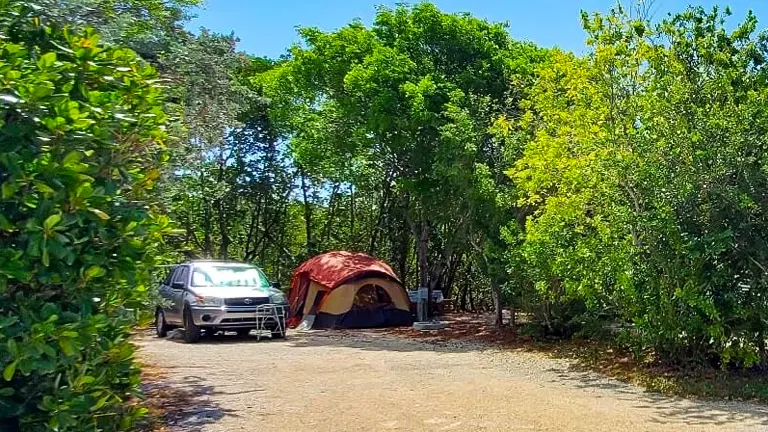
For those looking to extend their stay, John Pennekamp Coral Reef State Park offers camping facilities. The park provides both full-facility and youth/group campsites, allowing visitors to immerse themselves in the natural surroundings overnight. Camping enthusiasts can enjoy the sounds of the ocean, the rustle of the mangroves, and the unique experience of waking up within the boundaries of this marine sanctuary.
These recreational activities collectively contribute to the diverse range of experiences available at John Pennekamp Coral Reef State Park, accommodating a variety of interests and skill levels while promoting environmental education and conservation awareness.
Facilities and Amenities in John Pennekamp Coral Reef State Park
- Visitor Center: The Visitor Center at John Pennekamp Coral Reef State Park serves as an informative hub, offering visitors a wealth of knowledge about the park’s ecosystems and marine life. Here, guests can find interactive exhibits, educational displays, and a theater showcasing nature films. The center is an essential starting point for those looking to gain a deeper understanding of the park’s unique features and the importance of marine conservation.
- Campgrounds: The park provides well-equipped campgrounds for visitors eager to extend their stay. With 47 full-facility sites catering to both tent and RV campers, guests can immerse themselves in the natural surroundings of the park overnight. Restrooms and hot showers are easily accessible, ensuring a comfortable camping experience amidst the lush landscapes of John Pennekamp Coral Reef State Park.
- Saltwater Aquarium: Housed within the Visitor Center, the 30,000-gallon saltwater aquarium is a captivating feature that brings the underwater world of the park to life. The aquarium showcases a variety of fish and coral species found within the park, providing visitors with an up-close look at the vibrant marine life that thrives in the protected waters. It serves as an educational tool, fostering an appreciation for the delicate balance of the marine ecosystems.
- Boat Tours and Rentals: To facilitate exploration of the park’s waters, boat tours and rentals are available. Whether opting for a guided tour on a glass-bottom boat or choosing to paddle through the mangrove channels on a rented canoe or kayak, these facilities cater to various preferences. This allows visitors to discover the diverse marine environments and coastal landscapes while enjoying a range of aquatic experiences.
- Picnic Areas: Scattered throughout the park are designated picnic areas equipped with facilities such as barbeque grills. These areas offer visitors the opportunity to enjoy a leisurely meal amidst the natural beauty of John Pennekamp Coral Reef State Park. Whether after a day of underwater exploration or a hike along the trails, the picnic areas provide a relaxing setting for families and groups to unwind.
- Gift Shop: The park’s gift shop offers a variety of souvenirs, educational materials, and marine-themed merchandise. Visitors can find items that serve as reminders of their experience at John Pennekamp, from marine-life-inspired gifts to informative books about the local ecosystems. The gift shop provides an opportunity for guests to support the park while taking home a piece of its natural charm.
- Fishing Facilities: Recognizing the appeal of fishing in the Atlantic waters, John Pennekamp Coral Reef State Park has designated areas where anglers can cast their lines. The park follows Florida state regulations for fishing, and visitors can enjoy the thrill of coastal fishing while being mindful of the importance of preserving the marine environment.
These facilities and amenities within John Pennekamp Coral Reef State Park aim to enhance the visitor experience by providing a combination of educational resources, recreational opportunities, and the necessary infrastructure for a comfortable and enjoyable stay within this unique marine sanctuary.
Tips for Visiting John Pennekamp Coral Reef State Park
- Reservations and Planning: To make the most of your visit to John Pennekamp Coral Reef State Park, consider making reservations, especially during peak times or holidays. Planning ahead ensures availability for popular activities such as boat tours and camping. Additionally, checking the park’s website for any updates, closures, or special events will help you plan a smooth and enjoyable trip.
- Arrive Early on Weekdays: If you prefer a quieter experience, consider arriving early on weekdays. Weekday mornings typically see thinner crowds, allowing you to explore the park’s attractions with more tranquility. This is especially beneficial for activities like snorkeling and hiking, providing a serene environment to connect with the natural beauty of the park.
- Snorkeling and Diving Equipment: For those engaging in snorkeling or scuba diving, bringing your own equipment can enhance your experience. While the park does offer rentals, having familiar gear ensures comfort and a better fit. Don’t forget essentials like sunscreen, a rash guard for sun protection, and a waterproof camera to capture the mesmerizing underwater landscapes.
- Guided Tours for Insight: Consider taking guided tours, especially if it’s your first visit. Knowledgeable guides can provide insights into the park’s ecosystems, point out unique marine species, and offer safety tips for activities like snorkeling. Guided tours, whether on a glass-bottom boat or through the mangrove swamps, can enhance your understanding of the park’s natural wonders.
- Respect Wildlife and Ecosystems: John Pennekamp Coral Reef State Park is a protected environment, and it’s crucial to respect the wildlife and ecosystems. Avoid touching or disturbing marine life, adhere to designated snorkeling and diving areas, and follow all park rules. Responsible behavior helps preserve the delicate balance of the coral reefs and ensures a sustainable experience for future visitors.
- Check Weather Conditions: Given the outdoor nature of activities at the park, checking weather conditions is essential. Florida weather can be unpredictable, so staying informed about the forecast can help you plan accordingly. While the park is open in various weather conditions, certain activities may be affected, and it’s wise to be prepared for any changes.
- Bring Snacks and Refreshments: Pack some snacks and refreshments for your visit. Whether you’re on a boat tour, hiking the trails, or enjoying a picnic, having snacks on hand ensures you stay energized throughout the day. Additionally, maintaining proper hydration is crucial, especially in the Florida sun.
- Stay Informed About Regulations: Familiarize yourself with park regulations, particularly regarding fishing and water activities. Fishing is allowed in designated areas, and understanding and following state regulations contribute to the conservation efforts of the park. Being informed helps create a respectful and sustainable visit for both visitors and the natural environment.
By keeping these tips in mind, visitors can optimize their experience at John Pennekamp Coral Reef State Park, ensuring a memorable and environmentally conscious adventure in this unique marine sanctuary.
Recommendation
I highly recommend discovering John Pennekamp Coral Reef State Park for an enchanting fusion of natural wonders and historical importance. Recognized for its diverse ecosystems, iconic landmarks, and an array of recreational pursuits, this park provides a distinct and immersive adventure. Immerse yourself in contemplative outdoor pursuits like hiking and observing wildlife, all while actively participating in ongoing conservation endeavors. The picturesque trails, historical points of interest, and collective conservation initiatives establish John Pennekamp Coral Reef State Park as a central destination for individuals in search of a seamless blend of nature and recreational discovery.
Conclusion
In conclusion, John Pennekamp Coral Reef State Park stands as a testament to the captivating beauty and ecological significance of Florida’s underwater landscapes. As the first undersea park in the United States, it invites visitors into a world of vibrant coral reefs, teeming marine life, and immersive experiences both below and above the water’s surface. With attractions like Molasses Reef, glass-bottom boat tours, and the iconic Christ of the Abyss statue, the park offers a unique blend of natural wonders and cultural landmarks. Its commitment to conservation, evident through designated areas for snorkeling and strict regulations, underscores the dedication to preserving the delicate marine ecosystems. Whether engaging in snorkeling adventures, hiking the Wild Tamarind Trail, or simply enjoying a peaceful moment on the shores, John Pennekamp Coral Reef State Park provides an enriching sanctuary where nature, history, and recreation harmoniously coexist. It remains a destination where the allure of the ocean and the wonders of the Florida Keys converge, leaving a lasting impression on all who venture into its marine haven.
FAQs
- What makes John Pennekamp Coral Reef State Park unique among Florida parks?
John Pennekamp Coral Reef State Park holds the distinction of being the first undersea park in the United States. Its uniqueness lies in the preservation of diverse marine ecosystems, including vibrant coral reefs, making it a pioneer in showcasing the underwater beauty of the Florida Keys. - Can I explore the coral reefs without getting wet at John Pennekamp?
Absolutely! The park offers glass-bottom boat tours, providing a dry and comfortable way to witness the mesmerizing coral formations and marine life beneath the surface. It’s an ideal option for those who want a close-up view without engaging in water activities. - How can I contribute to conservation efforts during my visit?
Visitors can actively contribute to conservation by adhering to park regulations, especially those related to snorkeling and diving. Respecting designated areas and following responsible wildlife observation practices ensures the protection of the delicate marine ecosystems. - Are there camping facilities available within John Pennekamp Coral Reef State Park?
Yes, the park provides camping facilities with 47 full-facility sites suitable for both tent and RV campers. This allows visitors to extend their stay and immerse themselves in the natural surroundings overnight. - What is the significance of the Christ of the Abyss statue?
The Christ of the Abyss statue, submerged near North Dry Rocks, is a unique attraction symbolizing both art and spirituality. It serves as a captivating underwater sculpture and a popular site for scuba divers and snorkelers, adding a cultural dimension to the park’s marine landscape. - Can I fish at John Pennekamp Coral Reef State Park?
Fishing is allowed in designated areas within the park, adhering to Florida state regulations. Visitors can enjoy coastal fishing experiences while being mindful of the importance of preserving the marine environment. - What educational resources are available at the park’s Visitor Center?
The Visitor Center features interactive exhibits, educational displays, and a 30,000-gallon saltwater aquarium. It serves as an informative hub where visitors can learn about the park’s ecosystems, marine life, and ongoing conservation efforts. - Are there any tips for a more enjoyable visit to John Pennekamp Coral Reef State Park?
Planning ahead, arriving early on weekdays for a quieter experience, and bringing essentials like sunscreen, water, and snacks can enhance your visit. Additionally, considering guided tours for insights and respecting wildlife contribute to a more enjoyable and responsible exploration of the park.
Discover the wonders of John Pennekamp Coral Reef State Park, where the magic of the ocean unfolds in vibrant coral reefs and iconic underwater sculptures. From glass-bottom boat tours to camping under the stars, the park offers a unique blend of nature and recreation. Immerse yourself in the first undersea park in the U.S., leaving with memories of the Florida Keys’ unparalleled beauty and a deep appreciation for marine conservation.






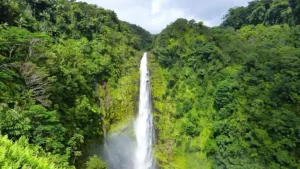
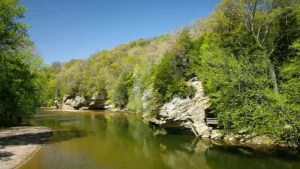






Leave your comment